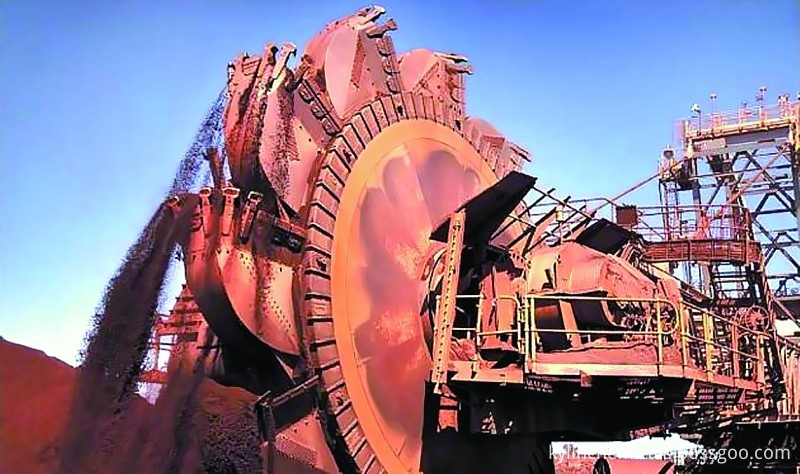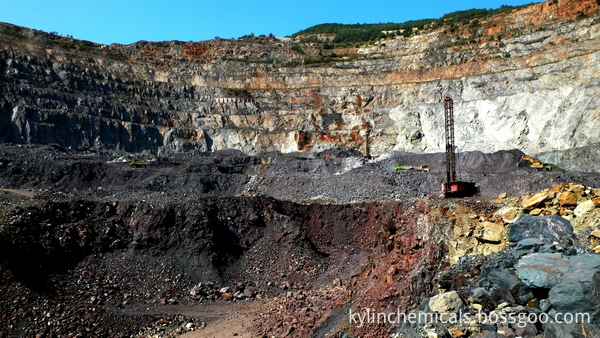The most important performance parameters characterizing the basic working capacity of a crane are the lifting weight and working level. 1 weight refers to the maximum weight of the weight that is allowed to be lifted under the specified working conditions, that is, the rated lifting weight. Generally, cranes with electromagnetic chucks (see lifting cups) or grabs should also include the weight of the electromagnetic chuck or grab. The hoisting weight of the jib crane also includes the weight of the hook set. 2 The working level is a performance parameter that reflects the overall working condition of the lifting machinery, and is an important basis for the design and selection of lifting machinery. It is determined by the total number of working cycles and load conditions that the hoisting machinery needs to complete during the required period of use.
The International Organization for Standardization (ISO) stipulates that the working level of the lifting machinery is divided into 8 levels. China only stipulates that the crane is divided into 8 levels, and the light and small lifting equipment, elevators, and overhead monorail systems are not classified. The working cycle is also an important parameter for cranes with strong regularity and repeatability, such as cranes for loading and unloading cargo on docks, stacking cranes for elevated warehouses, and hopper elevators for feeding blast furnaces. The duty cycle refers to the time required to complete a work cycle, which depends on the speed of the organization and is related to the handling distance. The above-mentioned cranes sometimes use productivity as an important parameter, and are usually expressed in terms of the amount of lifting done per hour.
The main parameters
(a) lifting weight G
The lifting weight G (represented by the usual letter Q in the past) refers to the mass of the lifting weight in kilograms (kg) or tons (t). Generally divided into rated lifting capacity, maximum lifting capacity, total lifting weight, effective lifting weight and so on.
1. Rated lifting weight Gn (excluding the mass of lifting wire rope, hook and pulley block) refers to the weight or material that the crane can lift together with the separable spreader or attachment (such as grab, electromagnetic chuck, balance beam) Etc.) The sum of the quality. For cranes of variable amplitude, the rated lifting capacity varies with amplitude.
2. The maximum lifting capacity Gmax refers to the maximum rated lifting capacity that the crane is allowed to lift under normal working conditions. For a variable-amplitude crane, it refers to the maximum rated lifting capacity that can be lifted under the safe working conditions of the crane at the minimum amplitude, also known as the nominal rated lifting capacity.
3. The total lifting weight Gt refers to the weight or material that the crane can lift, together with the spreader and the spreader or attachment that is fixed on the crane for a long time (including hooks, pulley blocks, lifting wire ropes and on the boom) Or the sum of the masses of other lifting objects below the trolley.
4. The effective lifting weight Gp refers to the net mass of heavy objects or materials that the crane can lift. For example, a crane with a slingable grab can allow the grab to grab the mass of the material to be an effective lifting weight, and the sum of the quality of the grab and the material is the rated lifting weight.
(2) Span S
The horizontal distance between the support centerlines of the bridge type crane is called the span and is expressed by the letter "S" in meters (m).
(three) gauge k
For the trolley, the distance between the centerline of the trolley track.
(4) Base distance B
The base distance, also called the wheelbase, refers to the distance between the centerline of the crane or trolley supporting the longitudinal direction of motion.
(5) Amplitude L
When the crane is placed in a horizontal field, the horizontal distance between the vertical centerline of the empty spreader and the centerline of the swing is called the amplitude L. The amplitude has the largest and smallest amplitude points.
(6) Lifting torque M
The lifting torque is the product of the amplitude L and its corresponding lifting object gravity G, M = G · L.
(7) Lifting overturning moment MA
The lifting overturning moment refers to the product of the gravity G of the lifting object and its distance to the overturning line A.
(8) Wheel pressure P
Wheel pressure is the maximum vertical load that a wheel transmits to a track or ground. The unit is N.
(9) Lifting height H and falling depth h
Lifting height refers to the vertical distance of the horizontal stop surface of the crane or the running track to the highest position allowed by the spreader, in m.
(10) Lifting speed Vn
The hoisting (falling) speed Vn is the vertical displacement speed (m/min) of the rated load under steady motion.
(11) Car running speed Vt
Refers to the speed (m/min) of a car with a rated load running on a horizontal track under steady motion.
(12) Crane work level
The working level of the crane is an operating characteristic that takes into account the degree of utilization of weight and time and the number of working cycles. It is divided by crane utilization level (the total design life cycle, total number of work cycles) and load status. The crane load status is divided into light, medium, heavy and special four grades according to the nominal load spectrum; the utilization level of the crane is divided into U0~U9 ten.
The working level of the crane, that is, the working level of the metal structure, is determined by the main lifting mechanism and is divided into A1 to A8. (work busyness and full load).
Kylin Chemicals manfacturers & supplies high performance flocation flocculants & collectors, serving the various mining industries like coal, phosphorous, copper, lead, nickle, gold, silver, potassium & sand-washing, etc. Our advanced manufacturing facilities and effective quality control systems, ensures every delivery of goods fully meets/exceeds our customers` end using needs. Today, our flocation flocculants & collectors have been widely accepted by various mining industries in Southeast Asia, Middle East and Latin America.


Flotation Flocculants & Collectors
Flotation Flocculants & Collectors,Potassium Amyl Xanthate,90% Potassium Amyl Xanthate,Industrial Potassium Amyl Xanthate
Kylin Chemicals Co., Ltd. , http://www.kylin-chemicals.com
